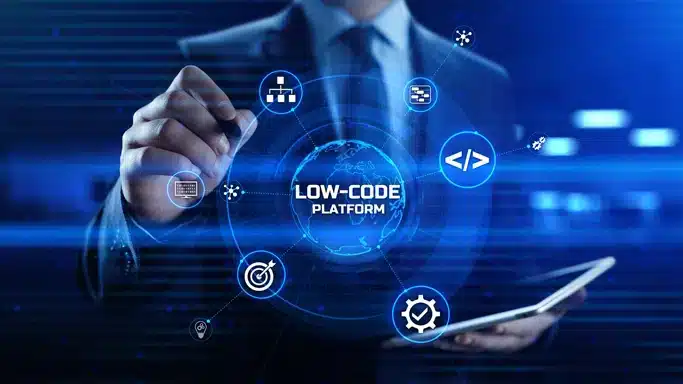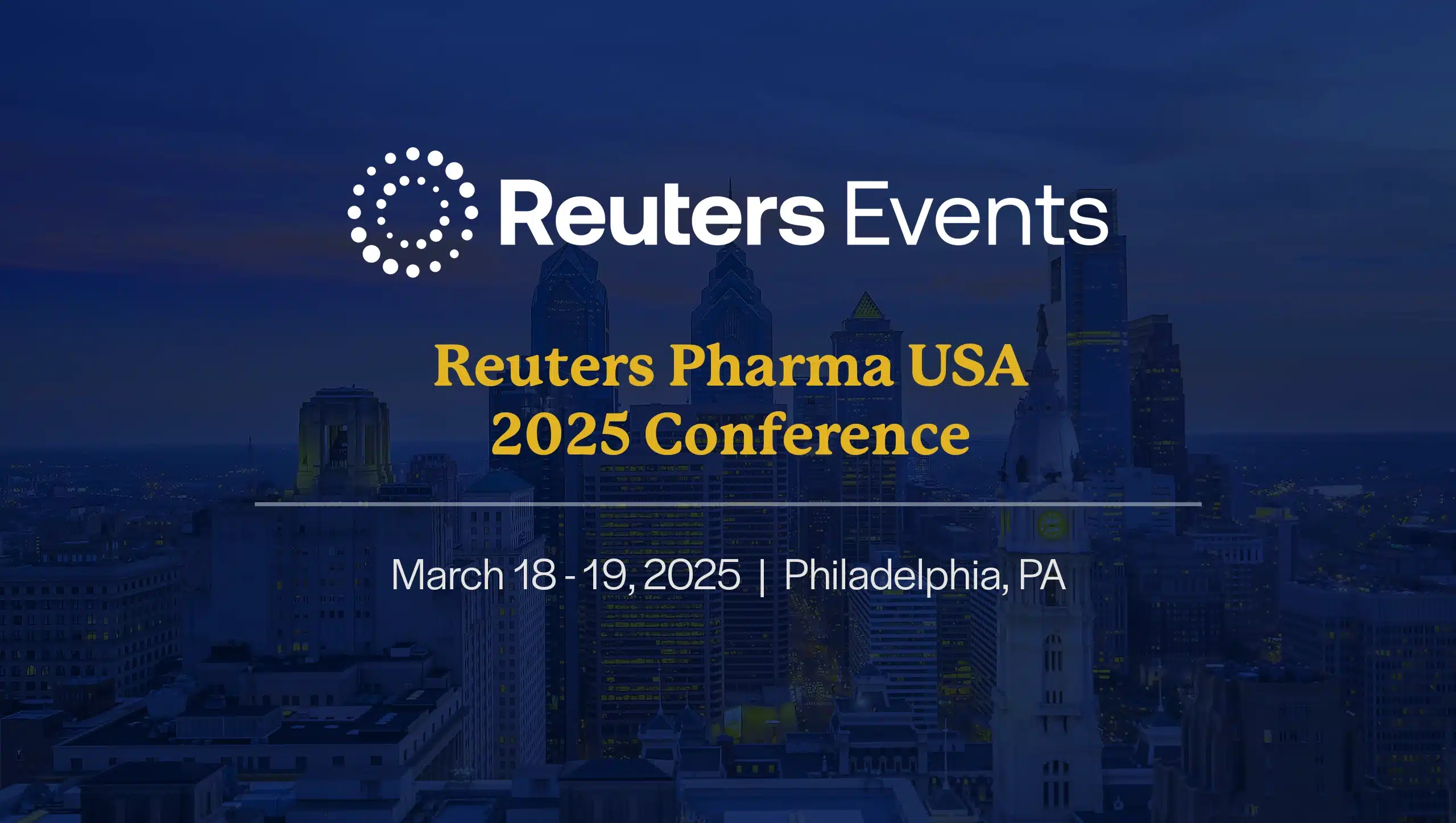

Client
A leading provider of real-world asset (RWA) tokenization, digital currency, and interoperability solutions to the world’s largest financial players
Goal
To optimize blockchain DLT platforms for scalability, resilience, and seamless operations through enterprise-grade DevOps and SRE practices
Tools and Technologies
R3 Corda 5, Azure, AWS, G42, Docker, Kubernetes, Helm Charts, Terraform, Ansible, GitHub Actions, Azure DevOps, Jenkins, Prometheus, Grafana, Slack Integration
Business Challenge
Complex Multi-Node Deployments require a mechanism to upgrade CorDapps, notaries, and workers across network participants without downtime or compatibility issues. Meanwhile, security and compliance risks demand strict access controls, network segmentation, and security hardening to protect Corda nodes and ledger operations.
For infrastructure scalability and automation, an efficient approach was required for onboarding new participants and managing network topology across cloud environments. The lack of a Real-Time Monitoring system necessitated the detection of transaction failures, tracking node health, and providing proactive alerts.
To address security vulnerabilities, continuous scanning and security enforcement across CorDapps, containerized nodes, and CI/CD pipelines were required.

Solution
- Enabled zero-downtime CorDapp deployments with automated rollback and stateful upgrades, ensuring stability and ledger integrity
- Secured Corda nodes with RBAC, network segmentation, and security hardening, while optimizing autoscaling for dynamic ledger workloads
- Automated Corda network topology and participant onboarding using modular Terraform & Ansible configurations, ensuring scalability and repeatability
- Implemented real-time monitoring with Prometheus & Grafana, with Slack-based alerts for transaction failures and node health anomalies
- Ensured high availability and auto-healing for Corda network nodes and ledger operations
- Integrated DevSecOps with automated vulnerability scanning for CorDapps, containerized nodes, and CI/CD pipelines

Outcomes
- Accelerated blockchain deployment cycles through CI/CD automation increased deployment frequency by 40% and reduced failures by 60%
- Optimized kubernetes workloads for Corda 5 through efficient resource management resulted in 15% cost savings and improved ledger performance
- Scalable & secure blockchain infrastructure reduced manual intervention by 30%, enabling seamless scaling of Corda network participants
- Proactive incident management for DLT networks through real-time monitoring cut response time by 50% for blockchain issues, ensuring high availability
- Automated workflows accelerated development cycles by 25%, enhancing collaboration across blockchain and DevOps teams

Our experts can help you find the right solutions to meet your needs.
Home » Services » Automation » Page 2

Leveraging Generative AI for asset tokenization
Enhance efficiency, security, and user experience by leveraging Generative AI in DLT-based asset tokenization.

Asset tokenization is converting ownership rights of an asset that has traditionally resided within legacy or traditional systems into a digital token on a Distributed Ledger Technology (DLT) platform. This transformation enables numerous benefits, including fractional ownership, 24/7 availability, easier transferability, and enhanced liquidity.
Developing and deploying a comprehensive asset tokenization system on DLT is a full-scale software development endeavor encompassing all SDLC phases. Every phase presents challenges, including technology complexities, evolving business use cases, non-standardization, scarcity of resources, and reluctance to adopt.
As asset tokenization emerges as an essential solution for financial institutions, the integration of Gen AI amplifies customer value. Institutions can achieve unprecedented efficiency, accuracy, and innovation by leveraging Gen AI's capabilities throughout the asset tokenization process.
Gen AI is set to play a pivotal role in improving asset tokenization by contributing to the different phases of its implementation. Gen AI can assist both in the implementation phase and beforehand, as it can help produce synthetic financial data that closely resembles real market conditions conduct stress tests and other simulations, helping to strengthen the platform.
Read our Perspective Paper for more insights into the key phases, benefits and the road map to asset tokenization.
Contact
Our experts can help you find the right solutions to meet your needs.
Get in touchStreamlining policy administration with low-code development



Client
A leading home insurance enterprise specializing in policy administration solutions
Goal
Develop policy administration applications for partner insurance carriers with seamless third-party and home-grown app integration
Tools and Technologies
Low-Code/No-Code Platform, AWS, Agile Development, Containerization
Business Challenge
The client needed a scalable policy administration solution to support insurance carriers, integrate third-party applications, and enhance policy issuance and settlement.
The goal was to accelerate the go-to-market process for partners and agents while delivering premier services for competitive pricing and superior policy coverage.

Solution
- Designed and developed a policy administration platform using a Low-Code/No-Code application development platform on AWS
- Built three Agile Pod-based teams, each containing five members for rapid iteration and development
- Leveraged containerized development, ensuring each service had its own lifecycle for enhanced flexibility and scalability
- Established weekly release plans with feature flags to enable controlled functionality deployment in production once the business was ready to adopt

Outcomes
- 200% growth in policy issuance
- Faster onboarding for agencies and agents
- Improved efficiency and scalability in policy administration
- Accelerated go-to-market for insurance partners and agents

Our experts can help you find the right solutions to meet your needs.
InsurTech NY 2025 Spring Conference

The annual InsurTech NY Spring Conference is April 2-3, 2025, at Chelsea Piers in New York City. The theme of this year’s forum is InsurTech is the New R&D. The event brings together 900+ leaders and innovators in the industry, including carriers and brokers of life, health and disability, property and casualty (P&C), and specialty insurance; investors; and insurtech service providers like Iris Software. Each year, speakers and attendees focus on the technology and business management solutions that will enhance the operations, customer experience, and revenue streams of insurers.
Meet the leaders of our global InsurTech team - Ravi Chodagam, Vice President, Venkat Laksh and Abhineet Jha, Senior Client Partners - at InsurTech NY’s 2025 Spring Conference. As an integral and long-time technology partner to many top life, P&C, and specialty insurers, Iris has vast experience implementing agile and advanced technology and data solutions that ensure clients stay competitive and ahead of rapidly evolving trends in the dynamic insurance industry.
Discuss your tech priorities with Ravi, Venkat and Abhineet at the Spring Conference, or anytime, and learn how leading insurers apply our solutions in AI and Generative AI, Application Modernization, Automation, Cloud, and Data Science & Analytics to ensure their enterprises are future-ready, scalable, secure, cost-efficient, and compliant. You can also contact the team and learn more about our InsurTech Services here: Insurance Technology Services | Iris Software.
Contact
Our experts can help you find the right solutions to meet your needs.
Get in touchTransforming payment processing for banking channels



Client
A leading Australian bank
Goal
Streamline the payment transaction lifecycle to handle increasing volume and complexity
Tools and Technologies
Jenkins, Kubernetes, Spring, Oracle, PostgresSQL, AWS, Docker, Kafka, Java
Business Challenge
Multiple banking channels - mobile, internet and branch - initiate various payment requests (20+ types such as ACH, mandate and book transfer) that need to be processed. Depending on the payment type, the channel was required to invoke one or more services in a specific order as per the associated business rules.
Changes to these payment workflows stemming from introduction of new payment types or revisions of business rules introduced complex and repeated changes to the bank’s systems, hindering scalability.

Solution
- To support lifecycle management of various payment transactions, including defining different payment workflows, we designed an event-driven architecture comprised of 40+ microservices (e.g., limit, eligibility, and fraud checks, etc.) supported by a Kafka message queuing system
- The architecture involved building an orchestration engine (landing service), acting as a front controller for all payment workflow requests from the various banking channels, such as mobile, internet and branch
- The landing service in turn invokes the corresponding service (limit, eligibility, etc.) based on the payment type and business rules associated with it
- Data flow between these microservices (resulting from further invocations) and other downstream systems is facilitated asynchronously with the help of a distributed messaging system (Kafka)
- Using Jenkins, we built a CI/CD pipeline to streamline the workflow by automatically building, testing and deploying code changes as they are committed

Outcomes
- Significantly eased the management of payment workflows, including those related to the addition of new payment types (resulting from an acquisition)
- Enabled systems to scale without introducing complex changes at the channels
- Improved reporting, resulting from faster access to data through dedicated microservices

Our experts can help you find the right solutions to meet your needs.
Join us at Reuters Pharma USA 2025

Reuters Pharma USA 2025 Conference, noted as North America’s largest cross-functional pharmaceutical gathering, is scheduled between March 18-19, 2025, at the Pennsylvania Convention Center in Philadelphia. With the pharmaceutical industry continually pressured by shifts in market trends and participants, product development, consumer sentiment, and government regulations, attendees and speakers at this Conference will be seeking and sharing insights and strategies to best navigate change, remain competitive, and future-proof operational units as well as global enterprises.
Swarnendu Banerjee, client partner and seasoned IT professional for the pharmaceutical and life sciences sectors, will be attending the Reuters Pharma USA 2025 Conference. He will share Iris’ extensive experience in these domains. How our advanced capabilities in AI/Generative AI, Application Development, Intelligent Automation, Cloud, Data & Analytics, Integrations, and Quality Engineering have delivered successful outcomes in mission-critical engagements, ensuring quality and compliance, reducing costs, enhancing UX, modernizing, migrating, scaling, accelerating, and streamlining.
Connect with Swarnendu at the Reuters Pharma forum or anytime, or visit our Services and Life Sciences capabilities pages to explore our innovative approach and strategies for end-to-end digital transformation.
Contact
Our experts can help you find the right solutions to meet your needs.
Get in touchModernized Payments Hub Improves UX and Compliance



Client
U.S. operations of a leading Japanese bank
Goal
Modernize payments architecture to streamline processing and improve client experience
Tools and Technologies
Jenkins, Kafka, Spring, Oracle, JBoss, React, Elastic Search, Java, Node.js
Business Challenge
The evolving payments landscape, with the introduction of ISO 20022 and the dynamic nature of the regulatory environment, necessitated advancement in the bank’s payment processing capabilities.
The lack of a modern architecture hindered client experience, with multiple channels initiating various payment types that required complex processing.

Solution
Our team built a centralized payments hub to orchestrate data flows between payment initiation systems and product processors. The steps:
- Designed a flexible and scalable microservices-based architecture to facilitate translation, enrichment and processing of payment transactions
- Built a messaging layer to streamline data flows between systems, through support for various modes of interaction, e.g., MQ, API and file (canonical / industry standards such as NACHA, SWIFT, JSON, etc.)
- Introduced an API gateway to handle multiple payment types to enable channel agnostic payment capabilities
- Deployed a modular approach to support existing and new systems with isolation of core and product processors and avoid redundancies in capability builds
- Developed a React-based UI as the touchpoint for integrations between the payments hub and other systems

Outcomes
- A core payments engine capable of seamlessly integrating with multiple, complex systems
- Superior client experience, resulting from a holistic view spanning initiation, payment rails, and clearing
- A modernized payments platform that is ISO 20022-compliant and future-ready for processing and reporting needs
- Faster implementation of functionalities for payment processors

Our experts can help you find the right solutions to meet your needs.
Automated POD improves turnaround time 95%



Client
Leading supply chain brokerage
Goal
Automate Proof of Delivery documentation process to increase efficiency and accuracy in data upload, validation and invoicing
Tools and Technologies
UI Path Orchestrator, UI Path Document Understanding, Microsoft Power BI, Oracle Transportation Management
Business Challenge
Proof of Delivery (POD) is a document that confirms an order has arrived at its destination and was successfully delivered before the invoice can be billed for payment.
Lack of an electronic POD system leads to inefficient, manual processing due to varied legal and contractual documentation requirements, resulting in longer billing cycles. Diverse formats and layouts from different carriers complicate data extraction from paper-based PODs.

Solution
- Developed a Document Processing Bot with UI Path AI Center, leveraging Document Understanding and Optical Character Recognition for managing various carrier documents
- Optimized data models for major carriers, focusing on the top five document types that represent 80% of the volume
- Implemented UI Path Action Center's "Human in the Loop" to handle exceptions and conducted 6-8 weeks of rigorous training on the Document Understanding model to ensure accuracy and meet confidence targets

Outcomes
- Achieved a 95% reduction in POD turnaround time, dropping from 48 hours to 2 hours, significantly boosting customer satisfaction
- Enhanced productivity by 87.5%, confirming receipt and condition of freight efficiently
- Reached 80% process accuracy, with continuous enhancement via automatic retraining
- Cut the billing cycle by 35%, allowing immediate use of data for customer invoicing

Our experts can help you find the right solutions to meet your needs.
Automated scheduling bots boost productivity by 50%



Client
Leading supply chain brokerage
Goal
Automate the manual, supply-chain scheduling process to improve staff productivity and customer satisfaction
Tools and Technologies
UI Path Orchestrator, UI Path Assistant, Microsoft Power BI, Office 365
Business Challenge
Performing crucial supply chain logistics, a provider’s operations team was struggling due to the high volume of scheduling appointments with shippers, receivers, and carriers, which involve back and forth emails, phone calls, or manual data entry into multiple Transport Management Systems (TMS).
These appointment-scheduling complexities vary based on the parties involved, from sending an email requesting appointment times to accessing a TMS and selecting what’s available as per their schedule.
Lacking proper analytics, sales representatives were unable to pinpoint peak appointment times, track cancellation rates, or discern customer preferences, often leading to shipment delays and incurred detention charges.

Solution
- Deployed multiple rule-based, automated workflows to pull information from incoming appointment requests (from emails, web forms, etc.) and automatically input it into the various TMS used to book pick-up and delivery appointments
- Developed a Power BI dashboard to visualize appointment trends, peak times, and cancellation rates, providing insights into customer behaviors, including frequent reschedules, preferred times, and typical lead times for booking appointments
- Delivered a reusable solution that could be leveraged for other business areas

Outcomes
- Bots operating 24/7 have led to over 15,000 monthly appointments being scheduled, resulting in a 50% reduction in manual scheduling hours
- The productivity of the operations team has improved by 50%, enabling staff to concentrate on high-value tasks rather than manual appointment-booking
- The increased accuracy in scheduled appointments has significantly decreased detention charges, thereby boosting overall customer satisfaction

Our experts can help you find the right solutions to meet your needs.
Unified automation strategy enhances efficiency



Client
Leading payroll and HR solutions provider
Goal
Develop automation strategy and framework that accommodates growth and ensures efficiency
Tools and Technologies
Ansible, AWS, Dynatrace, Gremlin, Groovy, Jenkins, Keptn, KICS, Python, Terraform
Business Challenge
The SRE (Site Reliability Engineering) shared services team faced a diverse set of needs relating to automation of infrastructure and services provisioning, configuration, and deployment.
The team was encountering resource constraints, as limited in-house expertise in certain automation tools and technologies was causing delays in meeting critical automation requirements. They also needed to ensure system reliability and were challenged to scale automation solutions to accommodate increasing demands as operations grow.

Solution
- Development of a comprehensive automation strategy to align with objectives, encompassing Terraform, Ansible, Python, Groovy, and other relevant technologies in the AWS environment
- Leveraging our expertise to bridge the knowledge gap, provide training, and augment the client team in handling complex automation tasks
- Implementation of a chaos engineering framework using Gremlin, Dynatrace, Keptn, and EDA tools, to proactively identify weaknesses and enhance system resilience
- Creation of a scalable automation framework that accommodates growing needs and ensures long-term efficiency

Outcomes
- A unified automation strategy that streamlined processes, reduced manual effort, and enhanced overall efficiency by 30%
- The implementation of chaos engineering and self-healing practices, which increased reliability between 20% and 50%
- A reduction in manual interventions along with improved efficiency that will result in cost savings of 25% - 50%

Our experts can help you find the right solutions to meet your needs.
Industries
Company

Bring the future into focus.
